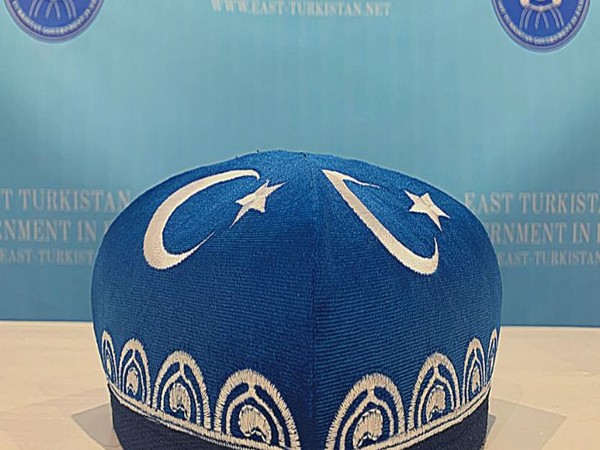Uyghurs increase wearing doppas to preserve their culture to counter China
May 05, 2022

Washington [US], May 5 : As May 5 marks Uyghur Doppa Cultural Festival, commonly referred to as Doppa Day, Uyghurs have been increasingly wearing their doppas as part of cultural preservation and symbolic national resistance against the campaign of colonization, genocide, and occupation being waged in their homeland by the Chinese government.
This statement was made by the Executive Council of the East Turkistan Government in Exile.
Doppa Day is celebrated mainly by Uyghurs and other Turkic peoples originating from East Turkistan as a marker of their unique Uyghur/Turkic culture and East Turkistani national identity.
The statement said that across the world, various ethnic groups and nations have a unique dress (clothing) that symbolizes that particular nation and ethnic group's culture and identity. Different colors and patterns are also seen in a specific ethnic group or nation's shared dress/clothing to distinguish certain regions or towns within a geographic area inhabited by that particular nation or ethnic group.
As a result of globalization, the historical dress/clothing of different nations and ethnic groups have primarily disappeared from everyday use. More often than not, they are only being worn by artists, musicians, actors, or on special occasions such as national holidays, weddings, cultural events, etc, the statement said.
The Doppa is a square and sometimes round skullcap originating in Central Asia. For thousands of years, the doppa was primarily worn by Turkic peoples across Central Asia and the Seljuk Turks who migrated and settled in Anatolia (modern Turkey).
Today the doppa is mainly worn by Uyghurs, Uzbeks, Tatars [in the Tatarstan Republic in the Russian Federation], and Tajiks.
"Like other nations' national dress/clothing, the wearing of the doppa has also been affected by globalization, but also the Chinese government's attempts to stamp out Uyghur cultural and national identity," the statement said.
Inside East Turkistan, the doppa is mainly worn on national holidays or special occasions like traditional weddings, funerals, and other social events. At the same time, in remote villages across East Turkistan, as recent as a decade ago, it still had a prominent presence locally.
According to the statement, as part of China's ongoing campaign of genocide against Uyghurs and other Turkic peoples, the wearing of the doppa has mainly been curtailed from various aspects of public life in East Turkistan.
Uyghurs in East Turkistan, especially those in the global diaspora, have pushed back against the Chinese government's efforts to stamp out their cultural and national identity by bringing back the wearing of the doppa into fashion, especially among the youth. It has now been widely seen as a symbol of East Turkistani/ Uyghur cultural and national expression, the statement said.
"Uyghurs in the diaspora, young and old, male and female, have been increasingly wearing their doppas as part of cultural preservation and symbolic national resistance against the campaign of colonization, genocide, and occupation being waged in their homeland by the Chinese government."
Given that the doppa is a symbolic but straightforward way of expressing East Turkistani / Uygur national identity, the East Turkistan Government in Exile has encouraged Uyghurs and other East Turkistanis to wear their doppas daily.
The doppa has essentially transformed into a symbol of resistance to China's attempts to eradicate the unique culture, national identity, and very existence of Uyghurs and other Turkic peoples, the statement said.



















